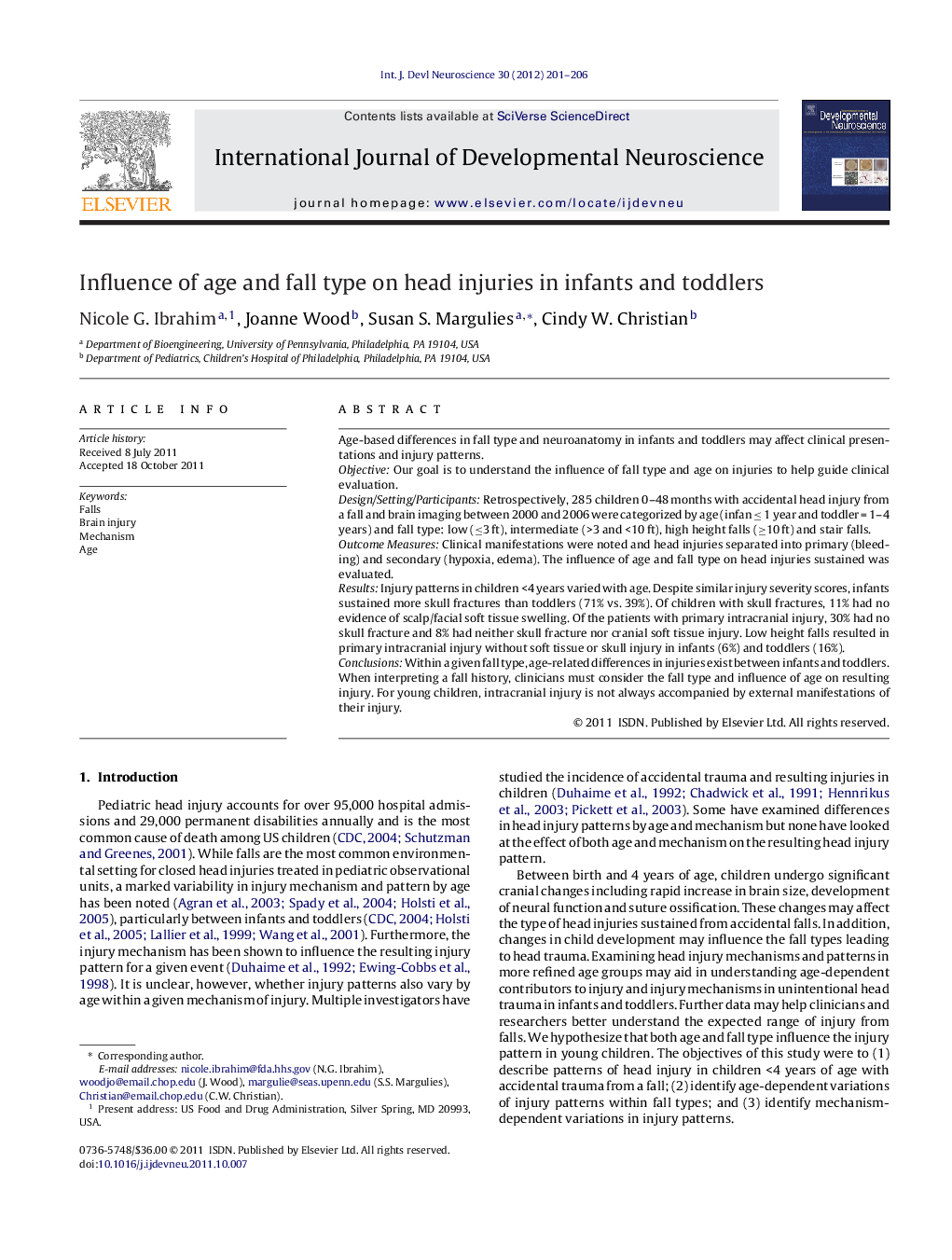| Article ID | Journal | Published Year | Pages | File Type |
|---|---|---|---|---|
| 2786231 | International Journal of Developmental Neuroscience | 2012 | 6 Pages |
Age-based differences in fall type and neuroanatomy in infants and toddlers may affect clinical presentations and injury patterns.ObjectiveOur goal is to understand the influence of fall type and age on injuries to help guide clinical evaluation.Design/Setting/ParticipantsRetrospectively, 285 children 0–48 months with accidental head injury from a fall and brain imaging between 2000 and 2006 were categorized by age (infan ≤ 1 year and toddler = 1–4 years) and fall type: low (≤3 ft), intermediate (>3 and <10 ft), high height falls (≥10 ft) and stair falls.Outcome MeasuresClinical manifestations were noted and head injuries separated into primary (bleeding) and secondary (hypoxia, edema). The influence of age and fall type on head injuries sustained was evaluated.ResultsInjury patterns in children <4 years varied with age. Despite similar injury severity scores, infants sustained more skull fractures than toddlers (71% vs. 39%). Of children with skull fractures, 11% had no evidence of scalp/facial soft tissue swelling. Of the patients with primary intracranial injury, 30% had no skull fracture and 8% had neither skull fracture nor cranial soft tissue injury. Low height falls resulted in primary intracranial injury without soft tissue or skull injury in infants (6%) and toddlers (16%).ConclusionsWithin a given fall type, age-related differences in injuries exist between infants and toddlers. When interpreting a fall history, clinicians must consider the fall type and influence of age on resulting injury. For young children, intracranial injury is not always accompanied by external manifestations of their injury.
► Head injury patterns vary by age and mechanism in infants and toddlers with accidental head trauma from falls. ► The presence of intracranial injury cannot be predicted from altered mental status or external signs of trauma. ► Intracranial injury is not always accompanied by external manifestations of their injury. ► For similar ISS and admission GCS, toddlers more commonly had altered mental status than infants. ► In contrast, infants more commonly had skull fracture and scalp/facial soft tissue injury than toddlers.
